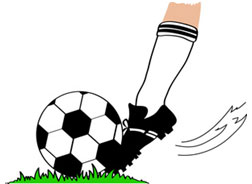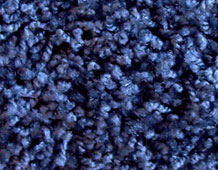

When you kick a ball and it rolls in the grass, the ball eventually stops. If the first law of motion states that the ball should stay in motion unless an unbalanced force acts on it, why does the ball stop?
Since the ball eventually stops, there must be an unbalanced force acting upon the ball. The unbalanced force is called friction. There is friction between the grass and the ball. Friction is a type of force that limits motion between two surfaces that are touching. Friction is the force that one surface exerts on another with the two surfaces rubbing together.
The strength of the force of friction depends on the following two factors:
Look at the following pictures. One is of carpet and the other of a wood floor. If a ball was rolled across both floor surfaces, which one would have greater friction?


Rough surfaces produce greater friction than smooth surfaces, so the carpet would produce more force of friction. If the ball was pushed with the same amount of force on both surfaces, the ball would stop moving sooner on the carpet because the carpet produces more friction.

The force of friction also increases if the surfaces push harder against each other. Friction is produced when you rub your hands together. Put your hands together and rub them very forcefully, pushing them together as you rub. Can you feel the heat? That is a product of friction. Now, rub them together lightly. There is not as much heat produced when you rub your hands together lightly.
Sources of images used in this section as they appear, top to bottom: